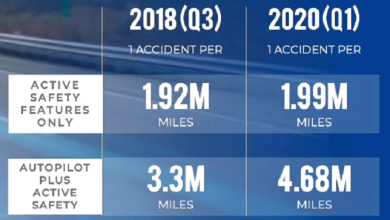Automotive Telematics in India: Evolving an Organic Ecosystem
Author: Vadiraj Katti, Founder & Managing Director, iTriangle Infotech Pvt Ltd
From the dawn of human civilisation, mankind’s predominant pursuit has been for connectivity. While the dream for physical connectivity dominated for thousands of years, the electromagnetism (EM) based connect is a much more recent pursuit. Today we have extensively connected systems, generically called the Internet.

In the last decade or so, with the second wave of internet, we have ubiquitous mobile devices now, greatly harnessing on the potential of EM or wireless communication. This perennial quest for connectivity has brought us to a juncture where we are ready to step up to integrate and connect our vehicles to the Internet. We have “smart cars”, that communicate and collaborate with other smart objects on the Internet. Vehicular Telematics is about this and much more.
Telematics is infact a watershed for the developments that have taken place in various disciplines and fields over the last few decades. Cloud Computing and Server Virtualization, Machine Learning and Artificial Intelligence, Big Data Analysis, Navigation Satellite Technology form critical subsystems in the telematics ecosystem. With the paradigms of Connected Cars, the Advanced Driver Assistance Systems (ADAS), and Self Driving vehicles, we are seeing emerging metasystems or “system of systems” in the field of telematics.
In the larger space of Internet of Things, Automotive or Vehicular Telematics leads the race. This is because the features that Telematics brings to the table, Safety, Security and Productivity, have found their applications best in this domain. The general public concerns like driver safety and road accidents have strongly fuelled the adoption of telematics solutions by automakers. And thus a sharp contrast between the adoption in automotive vis-a-vis other sectors.
Telematics in general is marked by the presence of several key stakeholders. This is not surprising owing to the fact that Telematics has emerged as a highly intersectoral technology. Some of the natural stakeholders in this space, specifically pertaining to automotive, are:
- Telecom Sector
- Navigation Satellite Systems
- Automakers
- OEMs and ODMs
- Automotive Component Suppliers
- Independent Telematics Unit Suppliers
- Auto-repair Service Provider
- Firmware Companies
- Cloud Service/IT Infrastructure Providers
- Web Mapping/GIS Service providers
- Automotive Software Providers
- Big Data Players
- Content and Infotainment Providers
- Insurance
- Governments
While the many critical subsystems of the telematics space bring great advantage to it, the challenge remains in evolving cohesion between these players. This is easier said than done. In this article, we will explore ways in which this synergy be achieved in the Indian context.
The adoption and integration of telematics solutions have attained certain maturity in the West. We see a number of B2B & B2C applications in this domain and a general adoption and acceptance by all the players involved including the end customer. For instance, Usage Based Insurance has become mainstream in the West. In India, however, the concept of telematics is still at a nascent stage. It is mostly confined to Track-and-Trace and the applications are sold B2B. There is no significant traction yet on the B2C front. For the Indian customer, telematics solutions rank much lower in the wish list of what they wish to see in their automobiles. However, recent surveys show a positive sentiment among the Indian customers in the adoption of telematics solutions. In a 2014 consumer survey conducted by Deloitte, over 48 % were willing to pay for telematics solutions in their vehicle [1].
The key stakeholders have both the advantage and responsibility to play a critical part in evolving an organic ecosystem for telematics in India. The central and state governments in India should promote and regulate the sector. Currently, the Center for Development of Telematics functions as a wing in the Telecom Technology Center in the Government of India. Both empowerment and independence is needed for this body on the lines of TRAI (Telecom Regulatory Authority of India). The scope of its functions should expand to promotion, regulation, and development of the telematics sector. Though the telematics sector is enabled by telecom, it has to find its progress independently.
GSM Network plays the most critical role in connecting the Telematics Units with Cloud. Even with a mobile subscriber base of 240 million, the GSM network is often patchy in India. The coverage gap exceeds 50% in most North East and Central Indian States. And even where there is mobile network, poor signal and packet drops are a commonplace. This prevents governments to seamlessly adopt telematics solutions as general policies. And businesses with operations in these areas too find difficulty in adopting telematics solutions. This also discourages the automakers to adopt pre-assembly telematics integrations in the Indian releases. It is unlikely that an automaker would risk to lose the rural market in pursuit of a value addition for the urban market. Needless to say, strong mobile coverage is a great enabler for successful telematics solutions in India. With Digital India and Broadband Highways programs, we can expect significant improvement in the telecom infrastructure in the coming years. The Universal Service Obligation Fund (USOF) currently sources telecom infrastructure in parts of the country where private players do not find operations profitable. Active contributions are needed by both private and public players to bridge the coverage gaps.
The poor or no mobile networks affects most telematics solutions but not all. A logistics company can replay the route taken by its automobiles at the end of the day even if there were a poor or no GSM network. All it needs to do is to capture the real time locations and store it onboard and transmit it only when it finds a signal. The firmware players in India now have these well tested solutions. But most telematics solutions would need real time processing of this data. An infotainment solution to access reviews on nearby hotels on your way back home from office requires V2I (Vehicle-to-Infrastructure) solutions delivered almost immediately. In addition to contributing to the expansion of mobile coverage, the Indian telecom companies have another role to play. The nascent and mostly urban telematics industry needs cost effective M2M (Machine-to-Machine) Data Solutions. With the largest cab aggregators in India adopting telematics solutions, this makes business sense to all stakeholders.
India is no exception to another universal problem in telematics – the lack of standardisation in protocols. This greatly hinders interoperability. For all the stakeholders to work in synergy towards a common objective, this is a prerequisite. The NGTP or the Next Generation Telematics Protocol, claimed to be a technology neutral approach, needs to still find its ground among the huge base of stakeholders involved.


